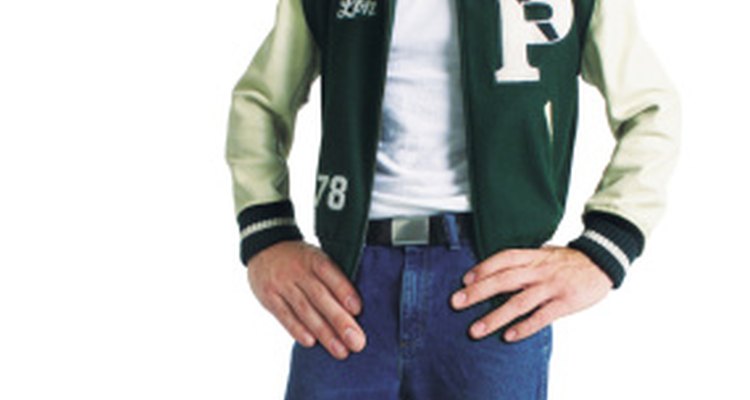
A varsity letterman jacket is an expensive symbol of sports and academic achievement as well as a piece of memorabilia to treasure for years to come. So when a jacket needs repair, it's important that the repair work be done correctly to preserve both its monetary and sentimental value. If a jacket's leather or wool has a large or jagged tear, it's best to hire a professional tailor to fix it. You can mend broken seams or small tears yourself, however, if you have the proper tools.
Hand-Sewing Leather
Tape the fabric together where the seam needs to be sewn, or use binder clips to hold the pieces in place (Reference 3).
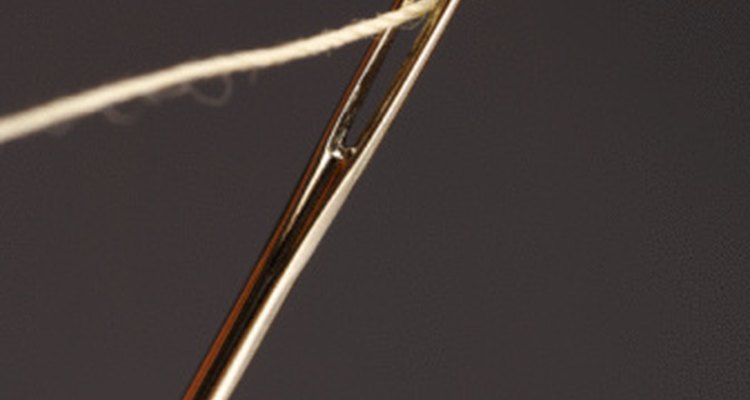
Use a needle designed specifically for stitching leather. Such needles are usually curved, with a sharp, triangular point. The thicker your leather, the thicker your needle should be (Reference 3).
Thread the needle with a synthetic thread, such as polyester or nylon. Cotton thread tends to break easily, especially when being sewn through thick fabric. (Reference 2) Choose a color that matches the original seams as closely as possible. Knot the thread at the end (Reference 2).
Stitch the seam with long stitches. Since the needle makes permanent holes in the leather, if the holes are too close together, they can tear and become one big hole. Also, ensure that your stitch placement does not allow the holes from the original or previous stitching to show through on the outside of the jacket. Start sewing where the original seam is still intact and pull the thread through to the knot. Continue stitching through the torn seam and into the other end of the intact seam. Knot the thread when you finish your stitching (Reference 2).
Machine-Sewing Leather

Use a needle designed specifically for stitching thicker materials, like leather. If your leather is thick, try a size 16 needle. If the leather is thinner, try a size 11 or size 14 needle. Thread the needle and bobbin with a synthetic thread, such as nylon or polyester, since cotton thread tends to break easily, especially when being sewn through leather. Pull about six inches of thread to trail from your stitching so you have enough thread left over to tie a knot later (Reference 3).
Adjust your needle thread tension. Set your machine's tension thread dial to 3 (as a starting point) and, as needed, adjust it higher to increase or lower to decrease the tension on your machine. Make sure that the stitches are not too tight for the leather. Adjust your stitch length to a long stitch -- about 3/4 of the length of the longest stitch that your machine can make (Reference 3). Before you start your repair work, you can practice stitching on scrap fabric that's about the same thickness as your leather. Make any adjustments as needed, ensuring that the stitches are neither too tight nor too loose. Also make sure that they're not so short that you risk having two holes tear and turn into one big hole. Additionally, stitches that are too long will not adequately hold the seam together.
Attach a Teflon presser foot, if you have one, to your sewing machine, because it will not stick to the leather. Sprinkle a bit of baby powder on your machine work area to help the leather slide smoothly while you sew (Reference 3).
Start stitching on top of the original seam where it's still intact. Do not stitch over your first stitches to lock them, as you normally would when sewing, because this can cut through the leather and make a hole. Also, ensure that your stitch placement does not allow the holes from the original or previous stitching to show through on the outside of the jacket. Continue stitching through the broken seam and about 1/2 inch into the other end of the original seam. Using the long trailing threads, make a knot very near to your stitching. Repeat by knotting the thread at the other end of the stitching (Reference 3).
Leather Tear Repair
Buy a leather repair kit that does not require sanding of the leather. Choose a shade that closely matches the color of the leather you need to repair (Reference 1).
Test the repair process and color on an inconspicuous part of the jacket. If they work well and the test repair is nearly unnoticeable, repeat the process on your actual tear (Reference 1).
Clean the leather on the area that needs to be repaired, as directed in kit's instructions. Continue to follow the repair kit's instructions. Keep in mind to apply the repair compound evenly, and let it dry entirely before wearing the jacket.
Related Articles
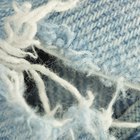
Repairing Ripped Jeans Without a ...

How to Sew Kneepads into Work Pants

How to Repair Stitching Holes in ...

How to Fix a Ripped Winter Coat
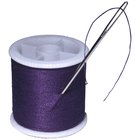
How to Fix a Rip in the Armpit of a ...
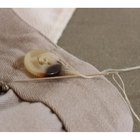
How to Repair Pants

How to Remove Patches From Leather ...

How to Glue a Leather Shoe Strap

How to Repair Sheepskin Slippers

How to Patch Small Holes in Polar Fleece

How to Repair a Torn Lambskin Leather ...

How to Repair Cigarette Burns in Leather

How to Sew a Ribbon to a Dress Without ...

How to Repair Fur Coats

How to Repair a Bra Strap

How to Hand Sew a Tear in Pants

How to Fix a Broken Elastic Bracelet

How to Fix Ripped Leather Gloves
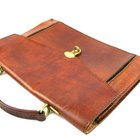
How to Restore Damaged Leather

What Causes a Loose Understitch in ...
References
Writer Bio
Barbara Bean-Mellinger is an award-winning writer in the Washington, DC area. She writes nationally for newspapers, magazines and websites on topics including careers, education, women, marketing, advertising and more. She holds a Bachelor of Science from the University of Pittsburgh.
Photo Credits
Photodisc/Photodisc/Getty Images